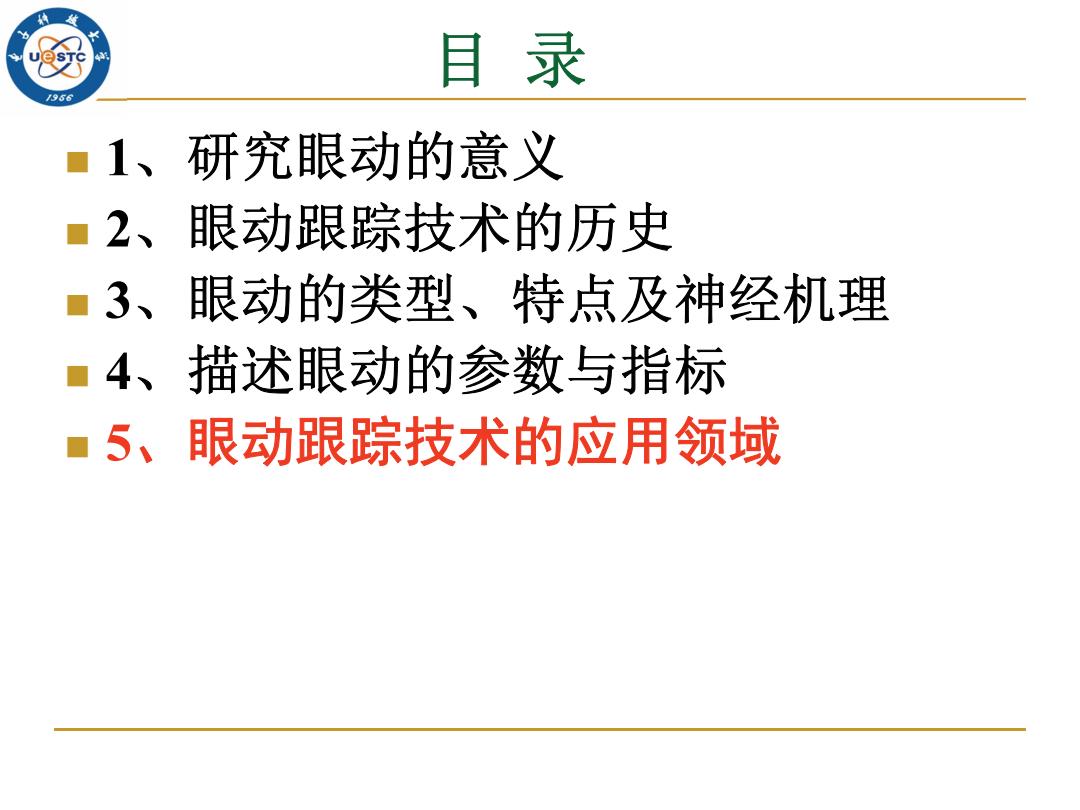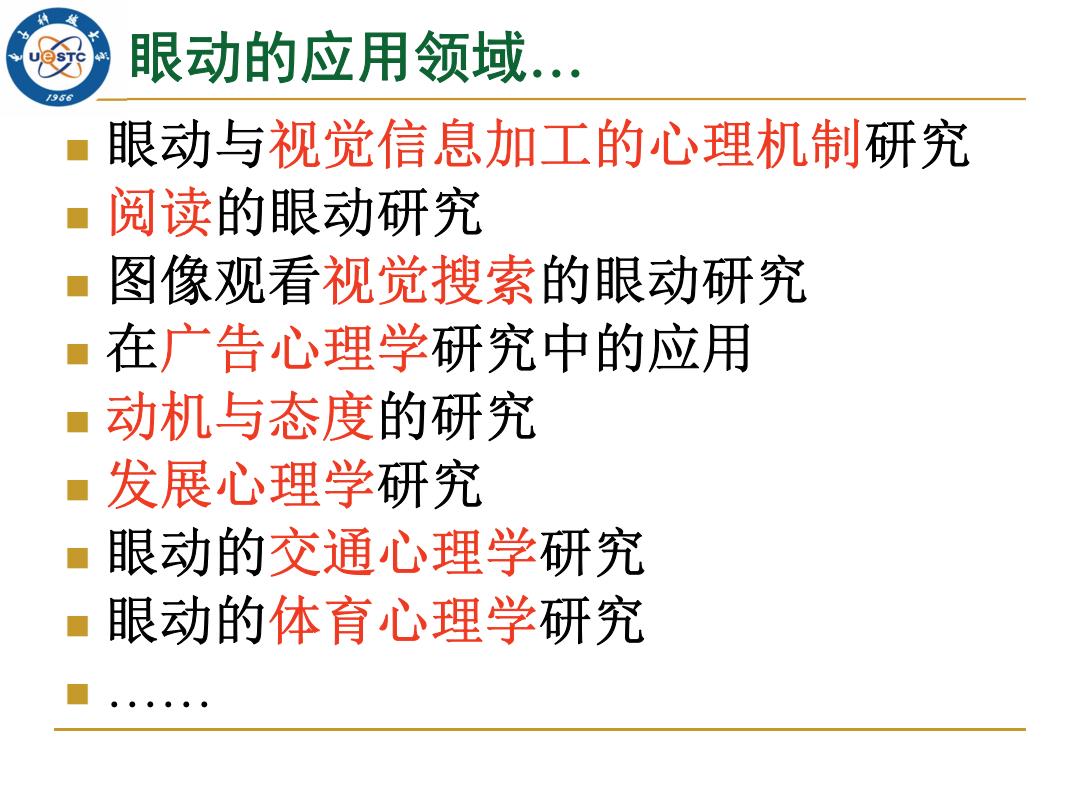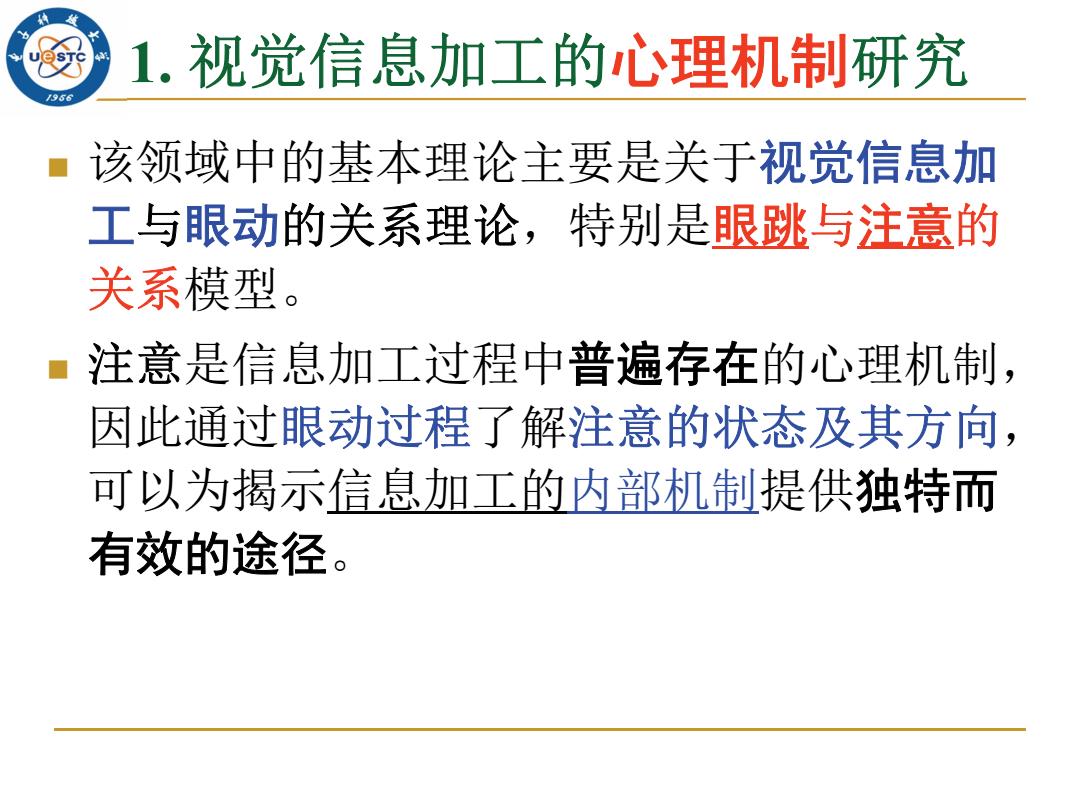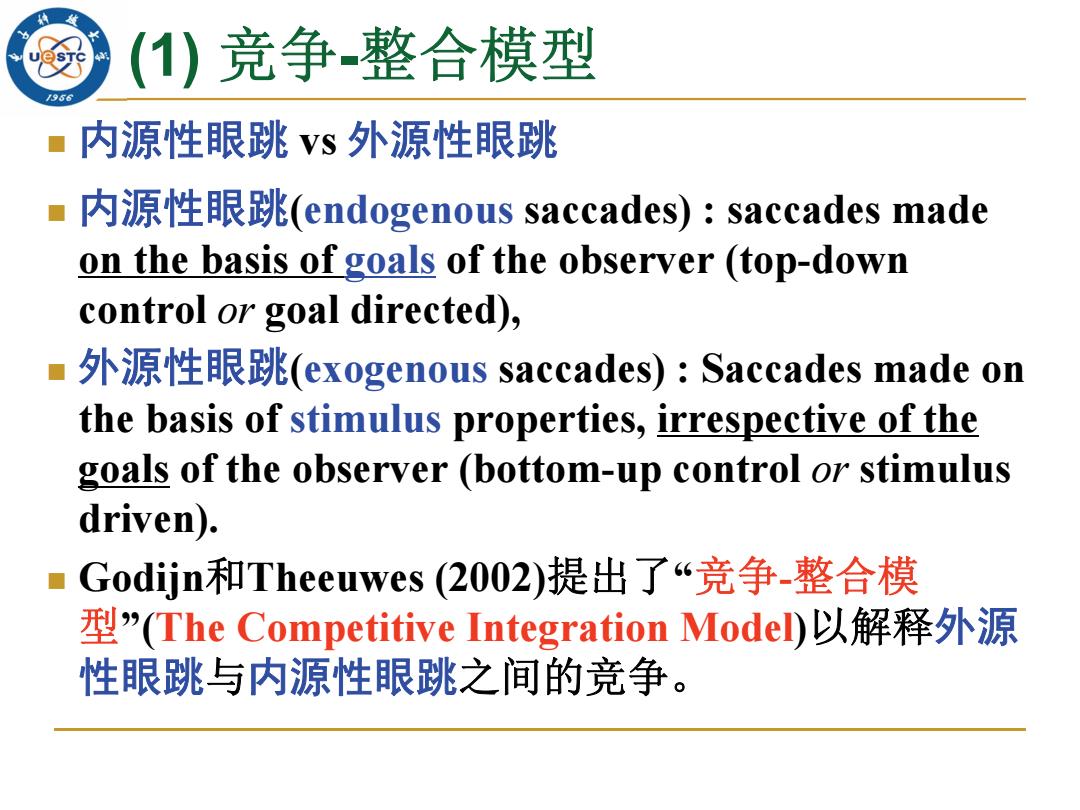
目录 /956 ■1、研究眼动的意义 ·2、眼动跟踪技术的历史 ■3、眼动的类型、特点及神经机理 ·4、描述眼动的参数与指标 ■5、眼动跟踪技术的应用领域
目 录 1、研究眼动的意义 2、眼动跟踪技术的历史 3、眼动的类型、特点及神经机理 4、描述眼动的参数与指标 5、眼动跟踪技术的应用领域

眼动的应用领域 /956 眼动与视觉信息加工的心理机制研究 阅读的眼动研究 图像观看视觉搜索的眼动研究 在广告心理学研究中的应用 动机与态度的研究 ·发展心理学研究 眼动的交通心理学研究 眼动的体育心理学研究
眼动的应用领域 … 眼动与视觉信息加工的心理机制研究 阅读的眼动研究 图像观看视觉搜索的眼动研究 在广告心理学研究中的应用 动机与态度的研究 发展心理学研究 眼动的交通心理学研究 眼动的体育心理学研究 ……

1.视觉信息加工的心理机制研究 该领域中的基本理论主要是关于视觉信息加 工与眼动的关系理论,特别是眼跳与注意的 关系模型 注意是信息加工过程中普遍存在的心理机制, 因此通过眼动过程了解注意的状态及其方向, 可以为揭示信息加工的内部机制提供独特而 有效的途径
1. 视觉信息加工的心理机制研究 该领域中的基本理论主要是关于视觉信息加 工与眼动的关系理论,特别是眼跳与注意的 关系模型。 注意是信息加工过程中普遍存在的心理机制, 因此通过眼动过程了解注意的状态及其方向, 可以为揭示信息加工的内部机制提供独特而 有效的途径

(1)竞争-整合模型 /966 内源性眼跳ⅴs外源性眼跳 内源性眼跳(endogenous saccades):saccades made on the basis of goals of the observer (top-down control or goal directed), 外源性眼跳(exogenous saccades):Saccades made on the basis of stimulus properties,irrespective of the goals of the observer (bottom-up control or stimulus driven). Godijn和Theeuwes(2002)提出了“竞争_整合模 型”(The Competitive Integration Model)以解释外源 性眼跳与内源性眼跳之间的竞争
(1) 竞争-整合模型 内源性眼跳 vs 外源性眼跳 内源性眼跳(endogenous saccades) : saccades made on the basis of goals of the observer (top-down control or goal directed), 外源性眼跳(exogenous saccades) : Saccades made on the basis of stimulus properties, irrespective of the goals of the observer (bottom-up control or stimulus driven). Godijn和Theeuwes (2002)提出了“竞争-整合模 型”(The Competitive Integration Model)以解释外源 性眼跳与内源性眼跳之间的竞争

The work of Theeuwes et al.(1998,1999) /956 Previous studies have shown that when participants have to execute an endogenous saccade toward a specific target object,the eyes are often captured exogenously by the abrupt onset of a new object,even though the participants know that the onset is always task irrelevant.(Theeuwes et al.1998,1999;Irwin et al.2000) ■→Our eyes do NOT always go where we want them to go!
The work of Theeuwes et al. (1998, 1999) Previous studies have shown that when participants have to execute an endogenous saccade toward a specific target object, the eyes are often captured exogenously by the abrupt onset of a new object, even though the participants know that the onset is always task irrelevant. (Theeuwes et al. 1998, 1999; Irwin et al. 2000) Our eyes do NOT always go where we want them to go!